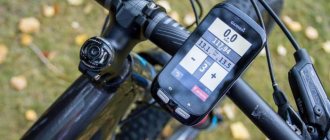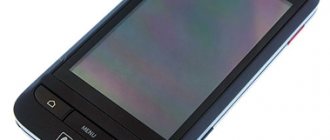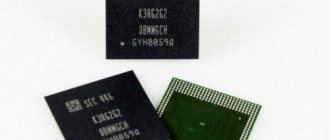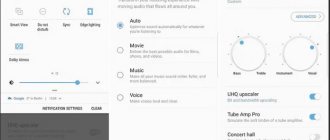Mobile phones and smartphones are experiencing a peak in popularity today. It is difficult for a modern person to imagine his daily life without these smart devices that allow him to get in touch with the right person at any time. But ordinary mobile phones are gradually giving way to smartphones. Let's figure out who needs a smartphone and why and how it differs from a mobile phone .
So, a smartphone is essentially a smart phone that, in addition to calls and SMS, has a number of additional functions. Unlike phones, smartphones have an operating system that allows them to perform tasks that regular cell phones cannot.
However, many today use a smartphone not as a multifunctional device that greatly facilitates life and solving pressing problems, but as a kind of image attribute indicating the status of the owner.
The history of smartphones
The idea to invent a smartphone appeared immediately after the creation of a pocket personal computer in the 1990s. Who first invented the smartphone? IBM was the first to combine a communicator and a mobile phone. The first phone that was released as a concept was the IBM Simon with a built-in organizer. In subsequent years, three or four more devices were released, each of which brought manufacturers closer to their cherished goal: OmniGo HP 700 LX, Nokia 2110, Nokia 9000.
Photo of Nokia 9000.
The word “smartphone” was first coined by Sony Ericcson for its relatively portable phone, the R380S. However, it ran on Symbian 5.1 OS, for which software could not be written. Therefore, the invention of the smartphone is not the merit of any particular company. Rather, it was created by everyone's efforts.
Why do you need a mobile phone?
People spend a lot of time, no, not with family, not with friends, not at work, but on the phone. Even when you sleep, it works, maybe even downloads some information for later use.
But still, the main and, of course, the most necessary function is communication. Just think about it, a phone helps you cover huge distances! But it cannot replace live communication...
Do you need a phone? Yes, with the help of a telephone you can hear and even see native voices and faces at a great distance. If you are on the road and rarely see your loved ones, the phone will help you not to forget, not to become discouraged and, most importantly, to hear the voices dear to you. Using your phone you can capture beautiful places, important events, performances of your favorite group or actor. The phone is important in everyday life.
How is a smartphone different from a telephone?
Mobile phones, almost since their inception, have had organizer functions (alarm clock, notes, calendar). But manufacturers tried to expand it. This is how the term “smartphone” appeared - a two-part word formed by merging two others: “smart” and “phone”.
Unlike mobile phones, smartphones have a more advanced operating system (Android, iOS, Windows), for which developers can write program code, implementing new ideas. After installing third-party software, the capabilities of the device become even wider.
Operating systems Android, Windows, iOS.
However, the difference between a regular phone and a smartphone has disappeared, since most devices (not to mention the cheapest devices) provide access to the Internet, allow you to receive mail and are equipped with other important functions.
Who still needs home phones?
The city apparatus is needed by a limited number of people. It is becoming obsolete, and more and more people are choosing to turn it off rather than pay extra money. Even though it’s 200-300 rubles a month, it’s still better to use the Internet or mobile communications. But in some cases, there is still a need for these devices.
Entrepreneurs
Company offices have landline telephones so that entrepreneurs can contact each other or their clients. IP telephony costs less than mobile communications and is more convenient for customers.
You can make cold calls only from standard equipment. It is connected to a computer, headphones and a microphone. Small firms don't even do this. A question of costs. Such communications for entrepreneurs cost less than mobile communications, even with corporate tariffs.
Pensioners
Pensioners are conservative. They do not adapt well to new technology. It’s more difficult to work with laptops and smartphones – it’s more common to work with home phones. Therefore, they leave them, even if it is not so profitable.
This trend is gradually disappearing, since mobile phones have been in use for more than 20 years. Anyone who wanted to learn how to use them, at least for making calls and receiving incoming calls, has already been able to do this. Only lonely pensioners will communicate in the city, because they have no one to explain to them that there is an alternative.
This is neither good nor bad. This is a given that must be accepted. With age, adaptation to changes and something new occurs more and more slowly. Therefore, old people will still use outdated technologies.
To call emergency services
Calling emergency services is something that may not happen in a lifetime. But, if a serious situation occurs, you need to make sure that the phone is at hand. The mobile phone may get lost, run out of battery, or lie far away.
A stationary device is in one place. In addition, it is connected to the network, each number corresponds to a specific address, so the rescue service can arrive even if the person does not give the house number and apartment.
For calls abroad
Mobile communications abroad are expensive. 10-30 times more expensive than domestic calls. Therefore, it is easier to communicate through a landline number. But gradually this is also becoming a thing of the past, because there are instant messengers and video communication services. If you have Internet access, you can call for free anywhere in the world.
Backup phone number
When someone starts selling on message boards, he has one problem: calls at any time, even during business hours. The text will say: call from 8 to 18, but people will still call at one in the morning and at two.
Okay, it’s night, you can switch off for this time. But if during working hours, and the boss is strict about the performance of duties, then problems with answers and endless calls cannot be avoided. Specify a landline phone number and problems can be avoided. To make everyone comfortable, the format can be specified as a mobile number: +7 (area code) number.
What is a smartphone for?
The functions of a smartphone include not only the ability to make calls, as was the case with a mobile phone. They mean much more. The device can be used for surfing the Internet, GPS navigation, communicating on social networks, studying, reading books, mobile photography, children's educational video games, and video processing. The mobile gadget can count steps taken and monitor blood pressure. It can be used for sports including running, race walking and jumping rope.
The functions and capabilities of the device are limited only by the user’s imagination and the set of installed applications. Additionally, new programs can always be installed from the application store, where developers are constantly adding new software.
The All-In-One Device Myth: The Smartphone
In this article I will describe my vision of answers to the questions: do you need a smartphone if you already have a tablet? Do you need a tablet if you already have a smartphone? Why do you need an e-book? The vision came after 6 months of using a smartphone and an e-reader. When I was choosing a smartphone model, I wanted it to be able to do everything: show and record video in decent quality, take photos, serve as a GPS navigator, provide the ability to browse websites, play games, read books, listen to music. If we ignore photo and video ( which should be dedicated to a separate post), you can notice the duplication of functions of the tablet and e-reader. On the other hand, I didn’t want to lose such familiar phone characteristics as speed dialing and battery capacity that allows the phone to be used for 4-5 days without recharging.
And only after several months of using a smartphone, comparing its capabilities with a tablet and an e-reader, does one finally realize what one should expect from it and what not, and what place it occupies on the shelf of electronic devices.
So, let's describe the main user scenarios - where a smartphone is suitable and where something else is needed.
Phone features
1.1. Size restrictions are imposed. The phone should fit comfortably in the palm of your hand and fit compactly in your jacket pocket or purse. For me, this means that the dimensions of the IPhone or Sony Ericsson Neo V are ceiling-sized and anything larger will violate clause 1.1 1.2. They impose restrictions on battery capacity and use: yes, a smartphone is convenient in 95% of cases - when you are in the city (work, vacation in a hotel) and you always have a computer with a usb cable - usb mini or charger at hand. Troubles can start during long flights, transfers, hikes - and in this case you will have to either take a second phone or limit the use of your smartphone.
E-reader features
Yes, with a smartphone resolution of 800×480 and a screen size of 3.7'' it is quite convenient to read (for example, using the Cool Reader program). But this comfort cannot be compared with reading from a 6'' e-reader.
Video Player Features
The above screen sizes and resolutions make the picture pleasant. But! I had the pleasure of watching a movie on the train and I couldn’t help but want to watch the same movie on a tablet at least 7” in size. The second point is that in video mode the phone works within 5-6 hours. This means that during a long trip, you are faced with a choice: watch a movie and remain without connection, or not watch a movie. Exit: - a second backup phone or, again, a tablet. In the case of a tablet, the choice is also easier to make
Browser Features
Currently, less than half of sites offer a mobile version of the site if the user accesses the site via a smartphone. And this means inconvenient navigation. I noticed that if you use specialized programs for Android to view content (for example, a real estate ad through Ria.ua), then after prolonged viewing (more than 30 minutes), your eyes begin to get tired, which is apparently due to the small font size.
Computer functions - games
To demonstrate the capabilities of the smartphone, I downloaded the car simulator, played for 10-15 minutes and... the desire to play again disappeared. But from time to time I play checkers, it’s interesting and exciting to run through Schulte tables, I was drawn to nostalgia - I installed “The Wolf Catches Eggs”, and to demonstrate the accelerometer I installed the game “Star Wars”, which simulates the sound of swinging a laser sword.
Computer functions - business applications
Mailbox, Calendar, MS Office document viewer, client-banking applications written for Android - here the smartphone lives up to its purpose 100%.
MP3 player functions
Everything is fine here if you have enough free memory on microSD.
Experience shows that for a good mp3 it would be good to have 4Gb+, or you will often have to manually “change the disc”, i.e. re-upload current folders with fresh music before each trip. Now the question is why is all this needed in a smartphone if, as you can see, the tablet noticeably wins? Answer: Because of size and mobility!!! A smartphone is always with me, while I will take a tablet, e-reader, and MP3 player with me on a pre-planned trip.
This actually means that the smartphone primarily serves as a kind of advanced “pager”. Which allows you to receive messages from various sources: telephone, Skype, organizer, email, social networks (Facebook, VK, GTalk, GooglePlus, Twitter), subscription to various conference forums). I use the e-book function in unforeseen circumstances - for example, in queues, while waiting for a dish to be prepared in a cafe restaurant, etc. The video and music functions are similar.
While if you want to read a book and you have 30+ minutes, then, of course, an e-book is more suitable at home. I see two arguments: firstly, the average weight of an e-reader is ~240g versus the average tablet weight of 350g at the moment, secondly, you don’t look at the light source, thirdly, you can forget about recharging (the charge can last for a month).
And to the question why do you need a tablet if you have a smartphone, I think I’ve already answered.
Frame
The housing of the device protects the internal components, including its main elements, from damage. It provides a more convenient user interaction with the device. The body contains buttons, a touch glass for controlling the phone, as well as ports for connecting headphones and a charger.
Various materials are used in the manufacture of the case: glass, ceramics, metal and plastic. The following types of cases are distinguished: monoblock (without moving parts), slider, clamshell and bendable. The latter type is still under development, since the creation of elastic flexible elements is still very expensive, and therefore unprofitable from a practical point of view.
Samsung Galaxy S7
Above are the flagship smartphones, but there are also budget models on sale. In general, today the cost of smartphones has dropped significantly. So, you can become the owner of such a device for just a couple of thousand rubles. Of course, this will be a simple device, but a fact is a fact.
The very first smartphone in our familiar form with a touch screen, where control was carried out only by hands, was the first iPhone - this happened in 2007. Then the smartphone became a real sensation, because before that no one had offered anything like this on the market. It is not surprising that in a matter of months the iPhone became the top seller.
It is worth noting that the functionality of the very first iPhone was limited. For example, it did not have the ability to transmit MMS messages, which, however, did not in any way affect the sales of the device.
CPU and motherboard
Without a motherboard with a processor (SoC), using the device would be impossible. The printed circuit contains not only the processor, but also many other important elements, such as a charge controller, LTE modem, Bluetooth, Wi-Fi, and a graphics accelerator.
There are several major manufacturers that develop their own processors, so most smartphones are based on them: MediaTek, Qualcomm, Samsung, Huawei, Apple.
This is what the smartphone looks like inside.
About the influence on our lives
With the advent of smartphones, and especially their touchscreen versions, they have slowly become the main source of information for humans. Most of the content that is distributed on the Internet is read/listened/watched from mobile devices.
We used to buy newspapers, books and other printed materials to find out the news or read an interesting piece. Now it’s enough to open the desired application or website on your smartphone and read or watch everything there.
Smartphones have set many new trends, things that directly affect millions of people. Instagram, TikTok and many other services work only for them. They have millions of users every day, it's a huge industry. Many people make money from this - exclusively using only their mobile device.
This device has not just entered our lives and become a part of it - it has long been firmly established in it. Entire industries of entertainment, work, and communication exist only on mobile devices.
With just one device in your hands, you can run an entire business, for example, an online store. Read/watch/listen to whatever you want. And at the same time be completely free in terms of your location.
Interesting! By the way, this is why the diagonals of modern phones are growing more and more - it is better to absorb content from larger screens, and there are more users who would like a larger diagonal. As mentioned above, not everyone has a computer, but almost everyone has such a mobile device.
Finally
I think that now you will no longer have the question of why you need a smartphone and what it even is. In general, you can safely call any such device simply - a phone, and you can’t go wrong.
tell friends
Similar posts Telephone - what is it, history of appearance and types
Tablet - what is it and what is it for?
Smart watches - what is it and how do they work?
Device - what is it: in detail in simple words
Comments - 0:
RAM and main memory
Random access memory (RAM) is a volatile memory used by an operating system, such as Android, to temporarily store and process information. Without her participation, all processes and calculations would take much longer, and multi-threaded mode would be impossible. Among the generations of RAM there are: LPDDR3, LPDDR4, LPDDR4X, LPDDR5. Each next generation is more productive than the previous one. At the time of writing, you could find mobile devices with RAM from 1 to 16 GB.
Main memory, unlike RAM, is intended for long-term storage of information. The internal storage contains the firmware, operating system and system programs. You can also save videos, games, music, images, documents here.
You can find devices with built-in memory from 16 GB to 2 TB. If the solid-state drive located on the printed circuit board is not enough, you can install a microSD memory card in the appropriate port - it will increase the amount of information stored on the device.
How to take a break from the Internet
You buy a phone just like that, and then it becomes your main one
This year I purchased for myself a remake of the Nokia 5310, created in 2020. I liked the updated version of the famous mobile phone so much that I decided to buy it first, and only then come up with a purpose. Now, with the help of a dialer, I relax on weekends: I still need a phone for communication, but sometimes I want to take a break from social networks and not check the page again. By the way, the presence of such a device also lifts your spirits - you hold it in your hands and plunge into memories of those times when everything was easy and simple.
Read on the topic: Why iPhone is easier to resell than Android
Battery
The phone uses a built-in battery as a portable energy source. It can be removable or non-removable - it depends on the modification and device used. Most of all mobile devices are equipped with lithium-ion batteries - they are unpretentious to use, do not have a “memory” effect and do not require calibration. Once the battery is charged, it automatically stops receiving charge from the charger.
Battery for smartphone.
What should I do if a girl got into my phone?
You can think whatever you want, but this is a real story: many men are faced with the fact that their significant other often checks their phones. And yes, this is the case when the owner of the smartphone is not entirely honest and is hiding something, and the second phone is needed to divert attention. Unfortunately, both are wrong - the one who uses the second phone to check on his wife, and the one who checks him.
And this happens: one phone is for the wife, the second is for the mistress
Generally, both phones are the same. The only difference is in the content and SIM card. So to speak, the main one for the wife. Jokes aside, but the situation is terrible. However, a second phone will come in handy even in such non-obvious situations.
Best Backup: Should You Buy a Rugged Smartphone?
Sensors and modules
For full operation of a mobile device, you need an appropriate set of sensors and modules. The device consists of:
- Microphones. Most devices have two microphones for recording stereo sound.
- Two speakers: one for conversations, and the second for playing multimedia files.
- Main and front cameras. Needed for photo and video shooting. The front camera is used, among other things, for taking selfies and for video calling.
- Wireless modules Wi-Fi, LTE, Bluetooth, IrDA, GPS, NFC, wireless charging.
- Hall sensor, accelerometer, temperature sensors, pedometer, as well as proximity and light sensors.
All modules and sensors are connected to the motherboard. They work thanks to the processing power of the processor. Using additional programs, you can control them, which greatly expands the functionality of the device.
Photo and video shooting
The resolution of photo and video cameras that was once available in older cell phone models can now only be found in the front camera of smartphones used for video communication. Modern smartphones allow you to shoot better video and take photos than video cameras and cameras. In addition, smartphones have an undeniable advantage: they are almost always at hand. This means that you can capture the best moments of both business and friendly meetings.
Display
One of the most important components, without which it would be impossible to use a mobile device, is the screen. Everything the user sees on it is processed by internal components. There are two types of displays that are installed in mobile phones:
- AMOLED, Super AMOLED - based on LEDs.
- IPS, PLS, TFT - based on liquid crystals.
The basis of all liquid crystal displays is LED backlighting. Liquid crystals play the role of filters, passing through which white light changes its color.
However, AMOLED displays work differently. Here, each pixel is a separate LED that can emit one or another light. These screens are more energy efficient because if the pixels are not working, the screen does not consume battery power. Displays based on liquid crystals are cheaper and therefore are installed in budget devices.
Messengers
You can communicate with people over the Internet with short text messages using instant messaging services ICQ, IRC, Jabber or the most convenient and popular mobile instant messenger WhatsApp.
Any type of video calling and text messaging over the Internet is free. You only pay for using the Internet itself. This is a significant saving when compared with the cost of calls and SMS, which are made through the mobile operator channel.
Principle of operation
The mobile processor processes information received from RAM and built-in memory. Corresponding modules are used to operate wireless networks, and additional sensors are used for comfortable user interaction. The battery is charged from the mains using a charger and is required as a power source.
It would be possible to do without a camera. However, users do not see a smartphone without it, since it is necessary for shooting. The basic elements are located inside the case, and on the front panel the touch display allows you to enter and receive the necessary information.
Media player
Playing music and video is perhaps the most striking difference between smartphones and their predecessors - regular mobile phones. Of course, who doesn’t remember the first multimedia models from Nokia or Samsung, which were able to play audio files in the “.mp3” format and small videos in the “.3gp” format. However, the minimalism and limitations of these phone models are far in the past, since modern smartphone models play almost all popular audio and video formats. The large diagonal and high resolution screens of modern smartphone models are ideal for comfortable video viewing. And when listening to music, smartphone users are now not limited, as before, to half a gigabyte of an external memory card for their music collection. Some smartphone models allow you to store up to 64 GB of various media files.











